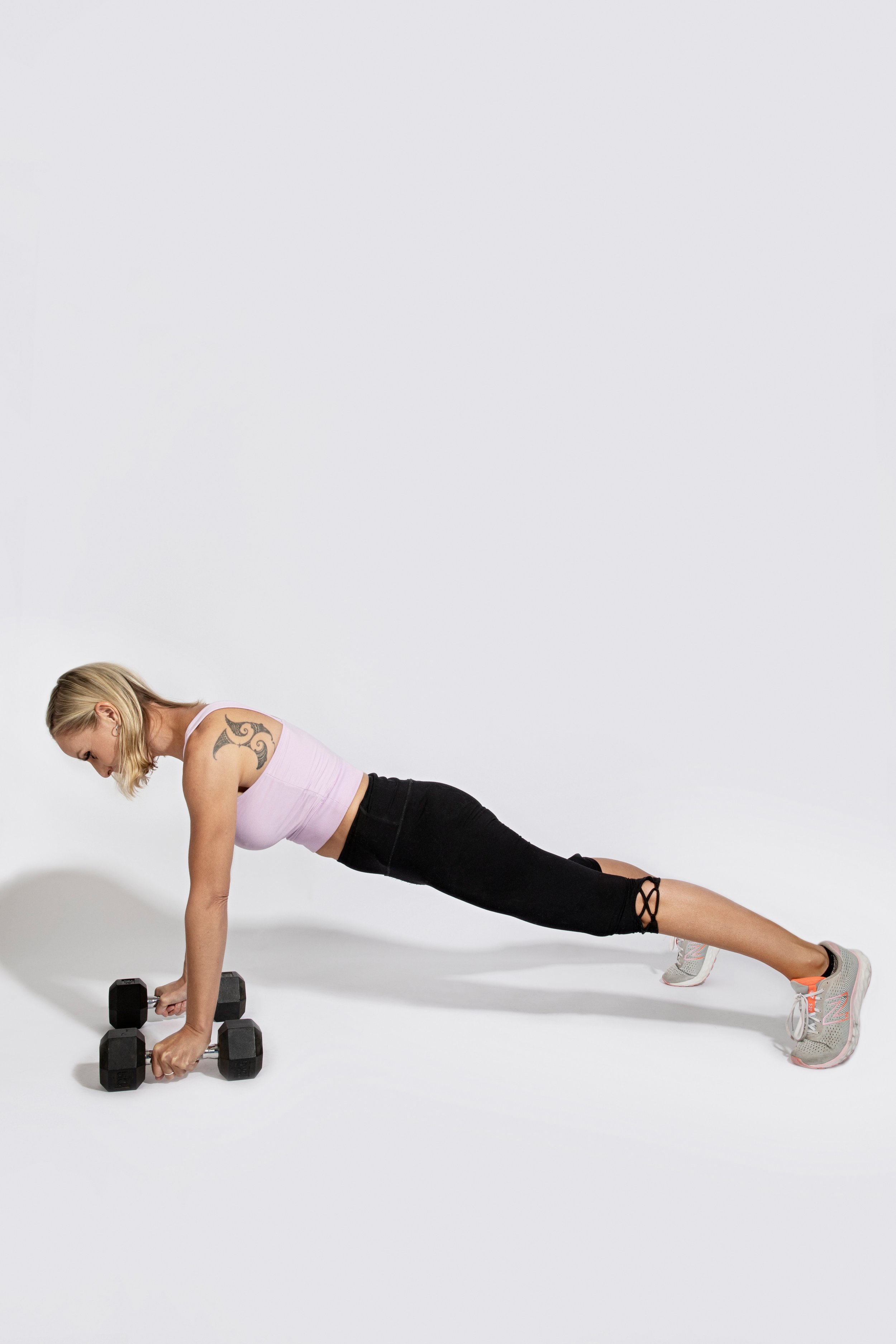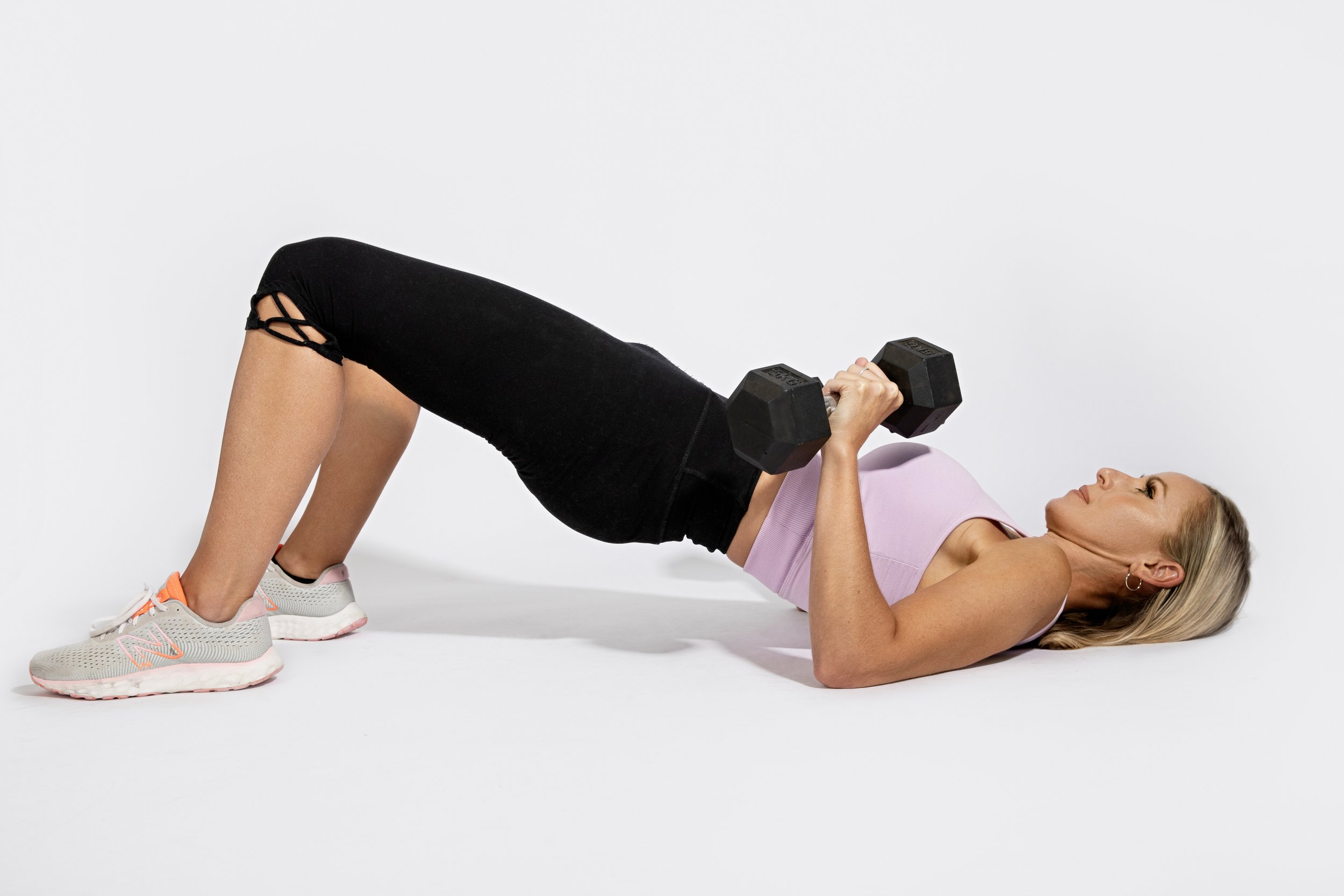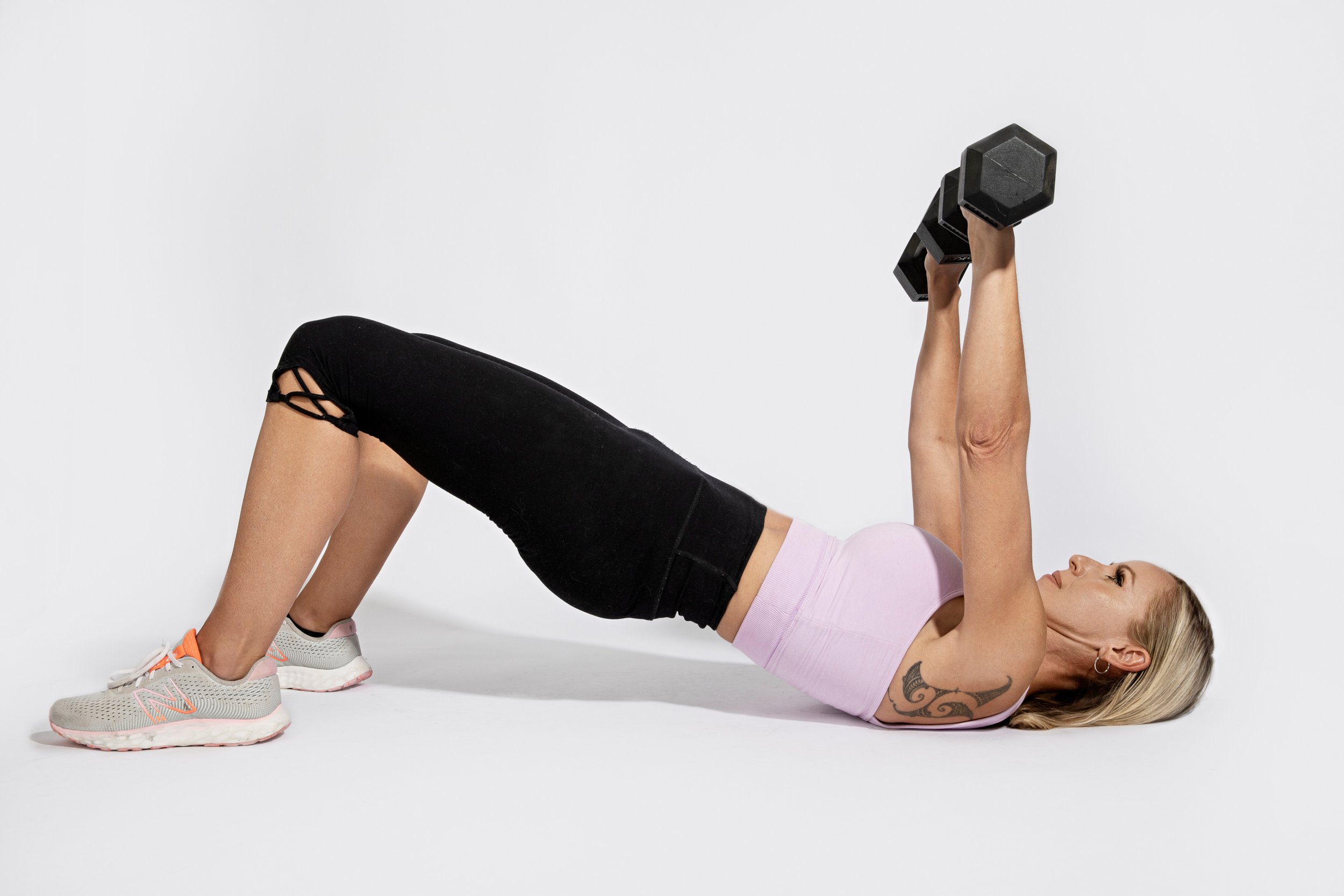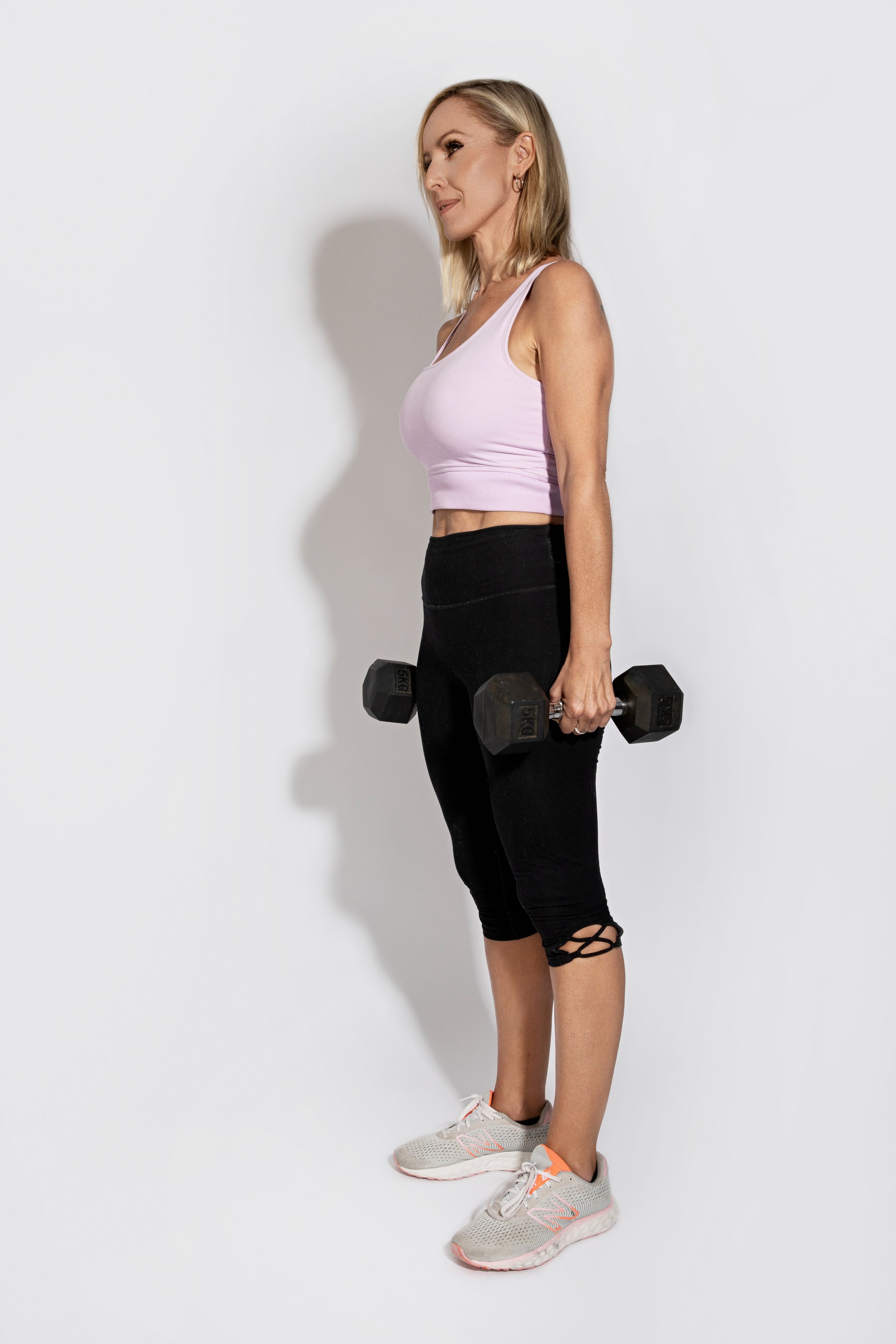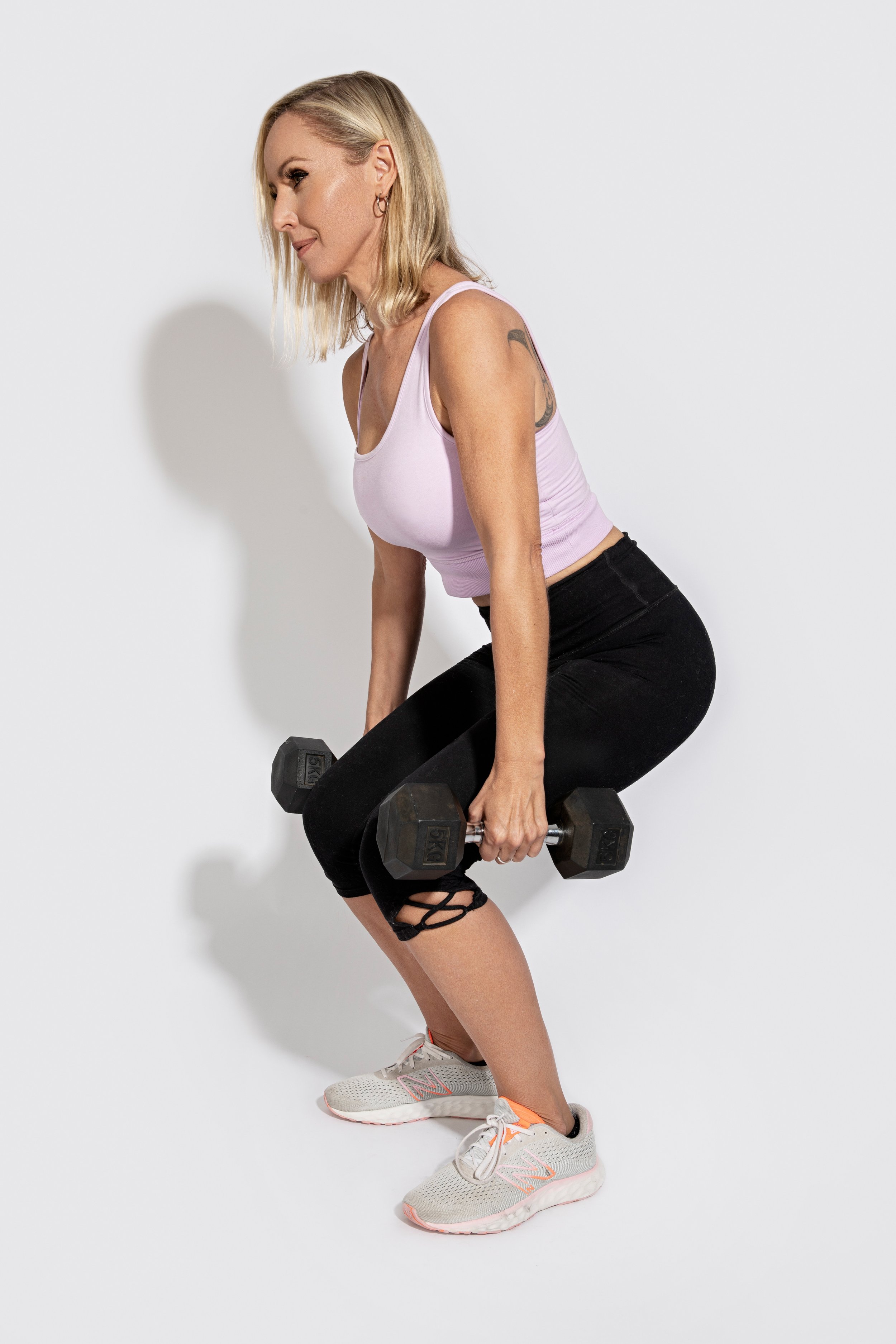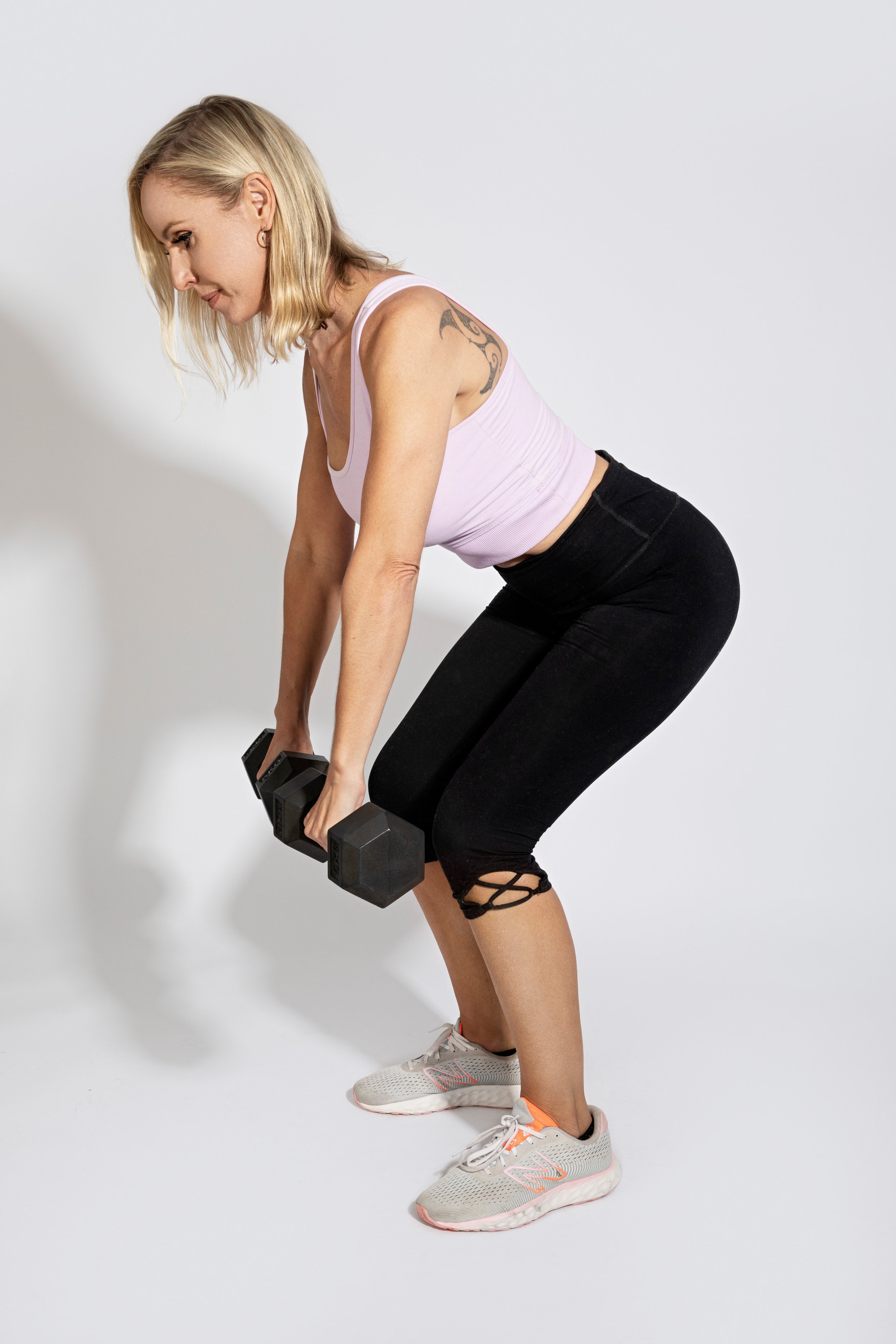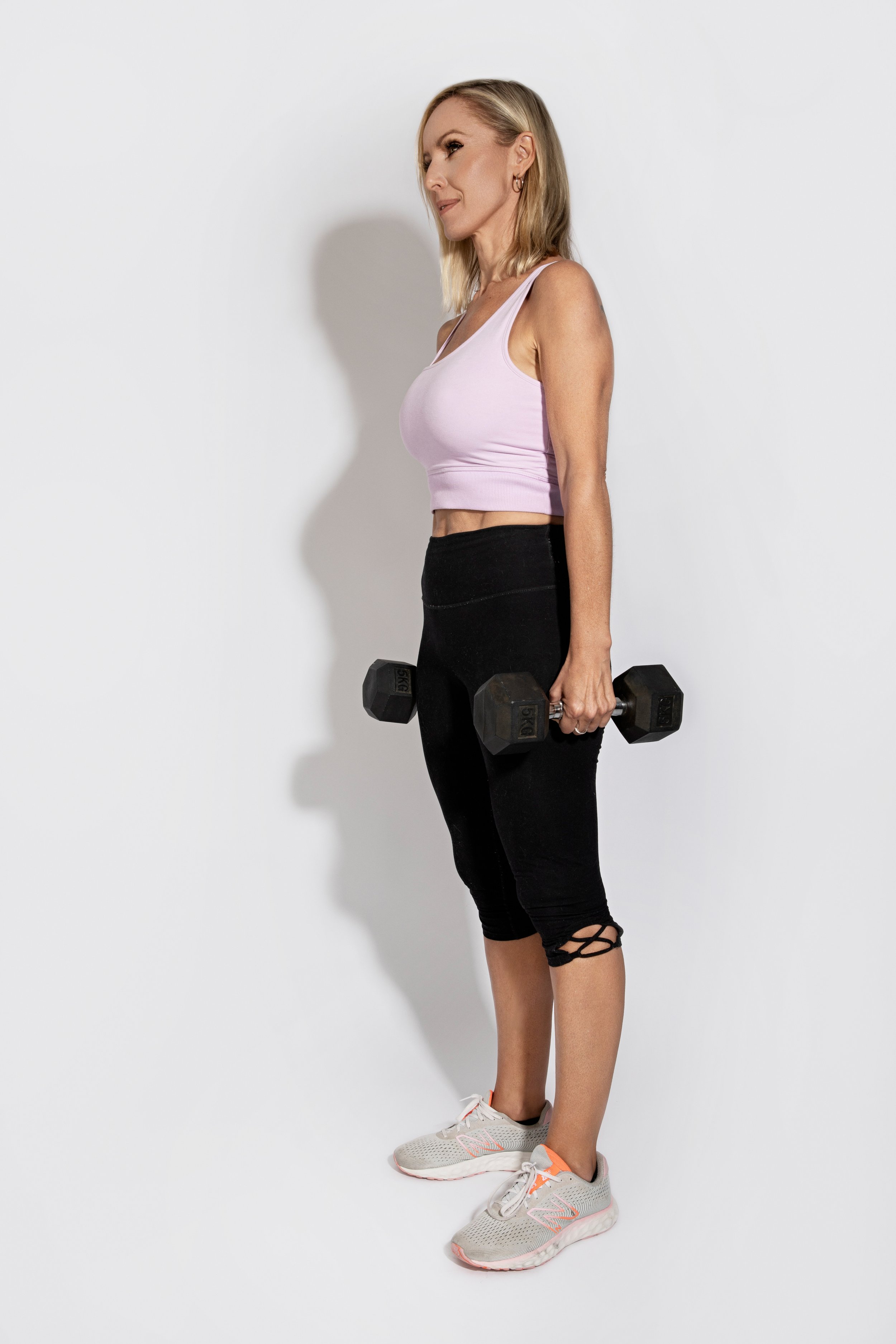An age of empowerment
When it comes to recent research around menopause, it’s become apparent that we don’t really have to go with the flow. UNO talks to two local experts, Dr Stacy Sims and Dr Linda Dear, about how women can take charge.
Words + Styling Nicky Adams
Photos Graeme Murray
Hair + Make-up Desiree Osterman
Whoever said there were two certainties in life – death and taxes - missed out the third, menopause. Historically perceived with a similar gloomy acceptance as the other two, finally an increased conversation around menopause is encouraging the idea that women can have more control over the experience, along with a realisation that there has been a failure to support women in mid-life. Targeted research and, most importantly, a move to de-stigmatise what is not an illness, but a life stage, has brought a shift of this topic into the public arena. Now open discussions are taking place everywhere, from the boardroom to breakfast TV.
Part of the problem is the general confusion out there; add to this the masses of misinformation and myths and the subject becomes a hotbed that makes most of us just want to bury our heads in the sand. The traditional definition of the menopause would be that it is the last menstrual period a woman experiences as the result of the ovaries no longer producing eggs. A woman is considered to have gone through menopause if she hasn’t had a menstrual bleed for 12 months. The average age that women experience this is 51, but the last-ever period can occur between 45 and 55 and it’s still considered normal. However, the additional curveball is perimenopause: Typically, a woman will enter the menopause transition – or perimenopause – two to four years prior, although this can be for a far longer period.
As a starting point, for many facing the end of their fertile years, it can be an emotional mountain to climb. While there is the upside of the cessation of periods (and I doubt any female has ever lamented their loss), the essence of this event is that it signals a move to a different life stage. And one that comes with the additional slap in the face of feeling as though we are passing into the unpromising land of being an ageing female.
Perhaps this might explain why it’s so common to approach such an important time of our lives with trepidation or lack of preparation. Because, in fact, preparation is something that can transform the experience and, as our experts Dr Stacy Sims and Dr Linda Dear agree, ensuring that the menopause is managed will help navigate many of the unpleasant aspects.
We all know what those wee peskies are. From the hot flushes to night sweats, sleeplessness, anxiety, cognitive fog, aching joints, tiredness and lower sex drive. Oh, and thinning hair and abdominal weight gain (and if you’re lucky, across the bust as well). Of course, these are a lucky dip of blanket symptoms, experienced to varying degrees and lengths of time. The other tricky thing is that even though when put together, in conjunction with a change in your cycle, each of these symptoms can be easy to mistake for the side effects of being stressed, busy and suffering from “rushing woman syndrome”.
Body Matters
Mount Maunganui local Dr Stacy Sims has a PhD in Environmental Exercise, Physiology and Nutrition Science. She works globally with female athletes, runs an online educational program sourced by everyone from health care professionals to individuals, has written books, and presents and makes podcasts. Her qualifications and research have been built on over the last 20 years.
"I started looking at sex differences in extreme environments and the more I got into that, the more I realised how much wasn’t known," says Stacy. "So I ended up doing my post-doctoral work with the Women’s Health Initiative, the big US study that was looking at menopause hormone therapy.” That was in 2007, and her quest to change the perception that when it comes to exercise, nutrition and medicine “women are not small men” has led to her becoming one of the leading voices in this arena.
Stacy and I talk about the necessity to get ahead of the game when it comes to menopause, but with this comes the difficulty of recognising the signs and symptoms of perimenopause. There is a blood test that can be done, but this is deemed unreliable. “When you look at what’s happening in perimenopause, you have all these changes in the ratios of oestrogen and progestogen, so if you go and have a blood test and they’ll say your progesterone is low and your oestrogen is at this point, and your follicular stimulating hormone (FSH) is really high, so you must be perimenopausal,” Stacy says. “Then you’ll go back a couple of weeks later and you get your bloods tested again and you’re at a different phase of your cycle and your hormones are at a different level, and your FSH has dropped, and it’s like – oh, maybe you’re not. Because you have
to look at the trends, you can’t do a one-off blood test.
“What we can look at is how you’re sleeping, how you’re responding to exercise. Do you have any overt symptoms of vasomotor night sweats, what about your concentration? Do you have brain fog, are you to-the-core fatigued? There’s many different things, especially when women are in their late 30s, early 40s,” she continues. More key as an indicator are patterns within your cycle. “We also look at the menstrual cycle itself (which doesn’t help if you’re on the oral contraception pill), but if you look at the menstrual cycle you start to see changes in the bleed pattern, not necessarily cycle length, but you’ll start noticing nuances in your own unique bleed pattern.”
Critically, I wonder, how can you understand the signs if you’re not looking for them? “I always tell women they should be tracking their cycle,” Stacy explains. “Because then they start to understand how they feel throughout the cycle. The more you track, the more you can see: When you feel flat and when you feel good. When those individual patterns start to change, and we start to see a change in the cycle itself, that’s when you know something’s going on.”
Feeling helpless
“I always have women say, ‘All the training I’m doing isn’t working. I’m not adapting, I’m getting slow, I’m getting fat, I’m getting tired. I’m trying this diet and it’s not working.’ And it’s like, okay, we definitely know you’re in perimenopause,” Stacy says. “You have women who say, ‘I don’t understand. Three months ago I was really lean and thin and now all of a sudden – boom – I have an extra five or six kilos on my boobs and my stomach. So I say, your body’s really responding to this sympathetic stress from hormone shifts. There’s this wicked circle going on.”
Where it can feel confusing is that it’s easy to assume most of the changes will happen in the 12-month window that your body is winding down. Seemingly this is not the case; in fact, it’s happening prior. Stacy tells me, “All the body composition changes happen in about the five years before that one point of time of menopause. It can be 15 years that you’re having a whole bunch of irregularities, but we really see the major amount of changes and effects the five years before that one point in time. We call it late perimenopause.”
Train your body and brain
As both an academic and an athlete, Stacy is uniquely positioned to address the journey with women who want to regain control over their bodies, and indeed mitigate the symptoms, which in some cases can quite literally stop women in their tracks. And importantly, how do we get results? I ask what steps Stacy would recommend to someone.
“I want them to track how they slept, what kind of training they’ve done, how they feel, what their heart rate variability is. You look at that, and on the overlay of training we look at the training stress score and how they are adapting,” says Stacy. “And a lot of time they’re putting in the work and nothing’s happening – they’re like a zombie through it all. They might be training for a race; they might be training for life. They get up and go to boot camp and are going through the motions but are not seeing any difference; they’re just getting more and more tired. Even if they’re doing progressive overload and they’re following this program or they have a PT, but they’re just not getting anywhere.
“When we look at that we know we need to get you out of modern intensity work – the boot camp – and into true high-intensity work. If you’re doing true high-intensity work, it’s a different story. True high intensity is short, sharp intervals – think 85-110 percent of maximum effort – with an entire session including warm-up and cooldown not exceeding 35 minutes,” Stacy explains. “What gym HIIT classes do is put women in moderate intensity, an intensity that is too easy to have any kind of adaptive changes, and too hard to give you a boost to your parasympathetic drive and recovery. It just keeps you in this state that drives cortisol up, that keeps you tired but wired and signals you to put
on belly fat.”
The key, Stacy tells me, lies in true high intensity interval training. “This is one to four minutes at 85 percent or more of your max and you have a variable recovery in between. The longer the interval, the lower the intensity, and you might have one minute on, two minutes off, repeat – and you’re really taking those two minutes to really recover. So, if you’re running and your one-minute pace is a 4.5-minute kilometre, then your two minutes would be probably an eight-minute kilometre. You’re totally polarising them, so that when you go to do that next minute, you can hit that 4.5-minute kilometre again. You might do that four or five times and that’s it.
“Sprint interval training (SIT) is a subset of high intensity that women should really incorporate. SIT induces better body composition changes, metabolic and cardiovascular health. SIT intervals are no more than 30 seconds as hard as you can go, with enough recovery (two to four minutes) to allow you to hit it at full gas again – and you might do those five times. This is 110 percent – like running up three flights of stairs and you’re going redline, and then you’re dropping your heart rate. And if you want to keep on going up, you start climbing really, really slowly. Then once you hit that four-minute mark, you go as hard as you can again. The goal is that recovery is a central nervous system response. But if you’re holding that stress for 20, 30 or 45 minutes when you’re not really going that hard, your central nervous system never really learns that this stress is something that it can overcome.”
Sprint training can be multifaceted in its benefits. The options of testosterone for mid-life women in the form of gels or creams is a route some explore; however, as Stacy points out, through exercise you can form your own pathway. “The other thing that sprint interval training does is when you’re done with that parasympathetic response that comes later, you also get an increase in growth hormone and testosterone. And women’s testosterone often starts to plummet more with natural age decline, which is a conversation a lot of GPs are having – that is, do we do testosterone replacement or not? Do the sprint interval training, because post-exercise there is a natural boost of testosterone, IGF-1, and growth hormone.”
Where to begin
While the big rock for exercise at this age is resistance training, this is relatively terrifying for the non-sporty among us. I wonder just how this type of regime works for the women in this camp. “We always phase people in – this isn’t just a training programme. We’re looking at what we can do to maintain quality of life for the rest of your life. We want to introduce you into lifting loads – I want to make sure you move well; I want to see what your mobility is before you start moving loads. Resistance training is not just for lean mass, it’s also for brain health. Cardiovascular work is really good for increasing total brain volume and maintaining the grey matter, but resistance training is critical for that neural adaptation because it increases the nerve growth factor. So, it’s vital for attenuating dementia and Alzheimer’s risks because you’re developing new nerve pathways.”
Then there’s those who recognise they need a plan of action, but simply can’t find the time in their schedule. According to Stacy, all is not lost. “This doesn’t have to take a lot of time – it can take 10 minutes here or there. Get moving, get outside, do a couple of surges upstairs, or squat jumps or lunges or pushups – something for 10 minutes three times a week is the start. If we really want to make it work, we do jump training: Skipping, trampoline, running or hopping up your stairs. It’s all really good for your bones, and your bones really suffer in peri- and post-menopause.”
Food for thought
Of course, how we eat is a key aspect of this life change. “Nutrition is part of the whole evolution. Women become very anabolic resistant, so it’s hard to build and maintain lean mass. We need more regular protein doses throughout the day – palm-sized doses of protein (20-30g) with every meal, and then 10-15g in every snack, a handful of almonds or half a single-serve of Greek yoghurt. And as many colourful fruit and veg as we can. We want to take care of the gut microbiome through all the fibrous fruit and veges and help our body with neurotransmitters, lean mass and body composition through protein. Even if you don’t exercise, but you have a higher protein intake diet, you can completely recomposition your body over the course of 12 weeks. Protein is so powerful. It’s not just meat, it’s eggs, yoghurts, cheese, nuts and so on.”
Not just a hot mess
Dr Linda Dear runs MenoDoctor – a medical practice dedicated to giving extended holistic consultations to women experiencing perimenopause and menopause. The concept is “Medicine meets lifestyle – the best of science, the best of nature, for women to choose from – to help them know their options and come up with a recipe that’s going to help them.”
Linda, like Stacy, is rooted in educating women with the purpose of empowering them – and in a wholly positive way, because while menopause signals an ending, it’s also a beginning. “We should know about it before it comes. Everyone feels too young for perimenopause
– anything with menopause in it makes us feel old, makes us feel used up and uncomfortable; it has a negative vibe about it. Even though it shouldn’t do because for many women it’s a liberating new chapter in their life that’s actually better than any of the others, as long as its handled right… Not every woman suffers bad symptoms; some breeze through it and come out the other side feeling surer of themselves, and more confident. So, this newfound irritability can sometimes be a positive thing as you get comfortable saying no. You start putting yourself first a bit more, which I don’t think is a bad thing.”
Grasping the difference between perimenopause and menopause is a crucial first step in wrapping your head around the journey. Linda breaks it down to a simple analogy: “Perimenopause is when your ovaries hand their notice in, and menopause is when they officially resign and leave. The notice period varies between women and when you hand your notice in you’re not doing your job like you used to. And that reflects what perimenopause is – not fully gone yet, but not quite as good as they were.” The reason the effect is felt throughout your body is because the ovaries have many jobs to do, with the hormones they make going everywhere in our body and brain. Understanding this helps us appreciate all the things that change once they stop doing their job.
Perimenopause is what Linda terms “the great disguiser”. As we talked about with Stacy, it’s all too easy to miss the signs or misdiagnose. “Menopause has been a blind spot in medicine, but in women as well, who feel too busy and too young for menopause.” For this multitude of reasons, it often becomes hard to recognise and then proactively address the physical fallout. Add to this the confusion around Hormone Replacement Therapy (HRT) that still prevails, and you have, quite literally, a hot mess. The burning question is, of course, is HRT safe?
There’s so much information and misinformation that it really is hard to know.
Linda is very reassuring. “When anyone hears HRT, the first thing they think of is breast cancer. Those things got stuck together 20 years ago from a big study in America that announced to the world there was an increased risk of breast cancer, heart attacks, clots, and strokes. Those four nasty things got attached to HRT, so everyone stopped using it. Doctors stopped prescribing it, med students stopped learning about it. HRT was dead, and the rates of use plummeted overnight. Was that fair, was that right? No. The increased risk of breast cancer was so small that it wasn’t statistically significant – out of every 10,000 women, HRT caused an extra eight of them to develop breast cancer. And this risk of eight extra cases was only after taking HRT for at least five years.”
Ironically, Linda continues, this is “lower than the risk of breast cancer from being overweight. Lower than the risk from drinking two or more alcoholic units a night. It was really overstated, and it frightened everyone away. There was an article last year in the Cancer Journal that talks about how amazing HRT is for women’s hearts and their mortality – their lifespan. They say very clearly that the breast cancer risk from HRT is not big at all.”
So, if there is a takeaway from this, it is that the benefits massively outweigh any risks. “You have to acknowledge the small increased breast cancer risk from combined HRT; the women on oestrogen only shouldn’t be worrying at all because the WHI study actually found lower rates of breast cancer in women taking oestrogen-only HRT compared with women taking no HRT. The women on combined, we have to say yes, there were eight per 10,000 extra cases, but it’s in comparison a small risk to take.”
Knowing that we can take back an element of control amid what can feel like a vortex of uncontrollable elements is incredibly empowering. It’s certainly a lot to try and get your head around, and aspects are daunting. However, for the woman who was told by her doctor to “harden up” to her symptoms, and for the woman who was asked by her boss to cut out the “mid-week drinking” as her memory loss was impacting her performance, the key message is hugely heartening. Changes are coming, and changemakers are among us.
For more information: drstacysims.com menodoctor.com
Time’s on your side
Personal trainer Kelly Rennie from Busy Mums Fitness demonstrates that high-intensity exercise doesn’t have to be complicated. It can be as simple as this 20-minute workout three times a week.
Whether you’re in perimenopause or menopause, the importance of high-intensity interval training (HIIT), or resistance training, is so important. These exercise modalities offer numerous benefits to women going through this transitional phase.
HIIT, characterised by short bursts of intense activity, helps boost metabolism, burn fat, and improves cardiovascular health. It also enhances insulin sensitivity and promotes hormonal balance.
Resistance training, on the other hand, strengthens muscles and bones, mitigating the risk of osteoporosis. It can also combat age-related muscle loss and promote a healthy body composition.
Combined, HIIT and resistance training help alleviate perimenopausal and menopausal symptoms, enhance overall wellbeing, and empower women to navigate this stage with greater resilience.
Each move should be repeated for 40 seconds, with a 20-second break in between. Repeat for four rounds. Start with 3-5kg weights and work up from there every few weeks.
RENEGADE ROW
CHEST PRESS
PLANK
SQUAT
BENT OVER ROW
LUNGE
For more info, head to busymumfitness.com
Mythbusting with Dr Linda Dear
Should you be guided by your mother’s menopause?
We always ask the age of your mum (especially if your mum has gone
through menopause early), but you can have a completely different version of menopause than your mum. Looking to relatives can be vaguely helpful but not definite.
Can you have menopausal symptoms but still have a period?
You can still be having horrendous perimenopausal symptoms and your periods have not changed one bit.
Is there an accurate test for menopause?
You can have normal hormone blood tests and be perimenopausal as hell. Blood tests can slip everyone up – there is no test for perimenopause. There is a test for menopause but the woman’s body tells you by not bleeding for a whole year. If you have a bleed within that time, you start the clock again. FSH (the hormone measured) fluctuates in peri, and sometimes it looks like it looks in menopause, so we can’t rely on that being measured.
Can you check for menopause if you’ve had a hysterectomy when there’s no womb or period?
You can check FSH but we want to know on two separate days – so if you get two high FSH readings in a woman, we’re more willing to say she’s been through it. The higher they are, the more confident we feel. From a medical point of view it doesn’t change options when a woman has had a hysterectomy. We can offer a woman all the same treatments whether she’s post-menopausal or perimenopausal – her symptoms matter more than her blood test results.
What if you don't have a period because of a Mirena?
If the woman has a Mirena, then it’s sometimes useful to do the FSH to confirm that she has actually gone through the menopause and her periods have now stopped naturally. That way we know that if we remove the Mirena, she isn’t going to get pregnant or get the heavy horrible periods back.
Is it true the symptoms of menopause can continue after you’ve been through it?
There are a fair number of women who continue to have hot flushes for the rest of their life, and they never sleep a whole night through until the day they die, and some of these women are really struggling. For most of us, it does not last forever; for the vast majority, whether you take HRT or not, your body adapts.
Will HRT prolong my menopause, or will I get addicted?
Nature happens in the background even if you’re on HRT. Most get off HRT and the symptoms have gone, they go through the choppy bit
relatively unscathed. Then it’s fairly smooth post-menopausal sailing.





